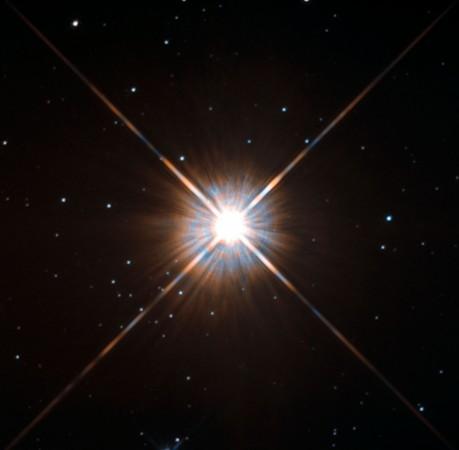Scientists from San Francisco-based Messaging Extra Terrestrial Intelligence (METI) plan to send signals to distant planets and communicate with aliens instead of waiting for them to initiate the interaction.
Also Read: Here's how NASA is using a laser to save Earth
Keeping it simple, the first message METI researchers plan to send to the intelligent aliens is "Hello".

The astronomers are planning to start the talks with aliens by sending laser or radio signals. The first celestial body they will send the message to is none other than Proxima Centauri, the star that is nearest to the Sun. Other far-off celestial bodies located hundreds or thousands of light years away will then be sent the communication signals.
"If we want to start an exchange over the course of many generations, we want to learn and share information," said Douglas Vakoch, president of METI and former director of Interstellar Message Composition at the Search for Extraterrestrial Intelligence Institute (SETI) in California, phys.org reported.
Founded last year, METI is going to host two workshops in 2017 in St. Louis and Paris. The organisation also plans to raise $1 million for its mission to install transmitters at remote spots in space.
For now, the researchers are thinking about how to create and send the simple yet powerful message, "Hello," to the aliens. However, the project is also turning controversial, with people asking whether we want aliens to know our whereabouts, especially if they are hostile.
To this question, physicist Mark Buchanan reacted by stating: "We have almost zero idea of whether aliens are likely to be dangerous," according to the journal, Nature Physics.
On the other hand, positive responses have also been received by METI.
"I think there's something to be learned, nothing to be feared, and at least the possibility of discovering something truly revolutionary: We have company nearby," Seth Shostak, senior astronomer with the SETI Institute, was quoted as saying by phys.org.
The first mission of this sort was spearheaded by NASA in the early 1970s, when Pioneer 10 and 11 spacecraft had carried a message in the form of a gold plaque, which was followed by a phonograph record.
Also, a radio message was beamed by SETI's Frank Drake, which could be collected in the form of a pictogram of images.
The song Across the Universe by The Beatles, and compositions of Vivaldi and Gershwin have also been sent to space for communicating with distant celestial bodies and aliens.
So far, no regulations have been formulated for sending the signals to space.
Internet entrepreneur Yuri Milner funded the SETI and the $100 million Breakthrough Listen project at the University of California, Berkeley, which aims at scanning space in order to discover any sign of alien technology.
















